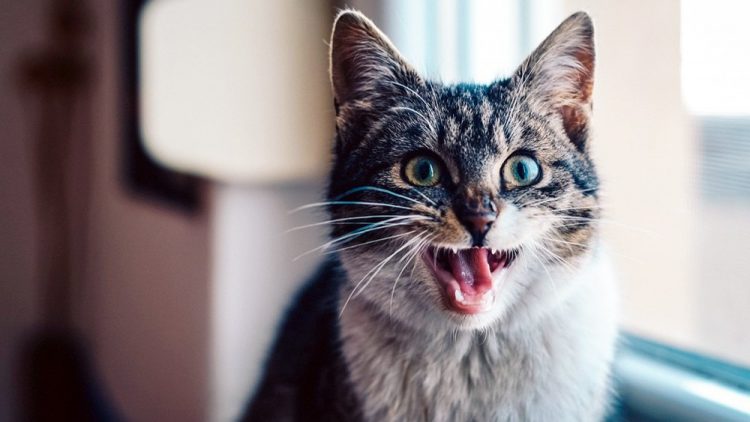Brushing your cat’s teeth is more important than most owners realize. Regular brushing with a suitable toothbrush and a top cat toothpaste is the single most effective way to maintain dental health between professional cleanings.
With an estimated 50% to 90% of cats over the age of four suffering with some manifestation of dental disease such as gingvitus and periodontitis; it’s clear that not enough owners are taking the reins and keeping dental health in check themselves.
Let’s guide you through the process from start to finish, and hopefully pass on some tips that will make brushing your cat’s teeth much easier.
Get Prepared
As far as equipment goes, you really don’t need much. We’d recommend having both a finger toothbrush and a regular cat toothbrush on hand, in case your cat strongly objects to one variant off the bat.
Handled toothbrushes with small bristle heads are typically recommended, but many find that their cats are more welcoming of finger toothbrushes to start.
Get yourself a cat toothpaste from a reputable brand. Enzymatic toothpastes are typically the most effective cat toothpastes available over the counter, and do a great job of removing bacteria before it can form into plaque.
You’ll also need a method of rewarding your cat at each stage. Tasty treats or their favorite foods are usually the go-to reward.
New to Brushing? Take your Time!
Don’t rush! In fact, Cornell University’s Feline Health Center recommends a 4-week program to get your cat accustomed to brushing.
Cornell recommend the following program to start brushing:
- Week 1: Let your cat become familiar with the toothpaste and toothbrush.
- Week 2: Train your cat to accept toothpaste being put in their mouth by hand.
- Week 3: Train your cat to accept toothpaste being put in their mouth via the toothbrush.
- Week 4: Begin brushing your cat’s teeth.
You can hear more about this 4-week program in the video below, or (if that doesn’t show), on their YouTube channel.
We know what you’re thinking, four weeks sounds like a long time to stick with it. Many cats will adapt faster, while some may take even longer to accept brushing, it depends entirely on the individual.
What’s important to remember is that once your cat is familiar with the sensation, brushing their teeth will be a piece of cake. Their long term health and their pearly white smile will thank you for your patience.
Let’s break the four week program down and explain how you should go about each step.
Familiarity with the Toothpaste and Toothbrush

Leaving the toothpaste and toothbrush in a place where your cat can easily inspect and sniff them will help them discover that they’re no threat.
Flavored cat toothpastes are really helpful here. Dabbing some poultry flavored toothpaste on the bristles and leaving your cat to investigate by themselves will make them associate the toothbrush with a positive scent and a tasty treat.
You can also apply a small amount to the end of your finger and let them lick it off. Cats experience the world a lot more vividly through smells than us humans. Familiarity with the smell of the cat toothpaste will be reassuring to them in the later steps.
After your cat has tasted the toothpaste, reward them with a small treat to bolster the positive association. Repeat every day for a week.
Accepting Toothpaste Placed in the Mouth
Next up, it’s time for your cat to get accustomed to you placing toothpaste in their mouth.
Begin by dabbing a small amount of toothpaste on your finger. Since the long canine teeth are the easiest to reach, gently lift your cat’s upper lip and apply the paste to the canine teeth.
It’s natural for your cat to struggle a little here; you probably wouldn’t be too keen on the sensation yourself.
Be sure to follow this up with a treat immediately afterwards. Repeat each day for another week.
Accepting the Toothbrush
On the third week, start introducing them to the toothbrush. As always, it’s best to start slowly; by letting them lick the toothpaste off the toothbrush. It’s important not to attempt brushing at this stage; build up trust first.
Follow up with a treat, and repeat daily for a week.
Throughout the week, you should gradually aim to be in control of placing the toothbrush near their mouth, rather than them reaching out to lick it.
Begin Brushing, Slowly!
Gently lift your cat’s lip up and slightly towards their head to expose the outer face of their teeth. Aiming for the crease between the tooth and the gum, hold the toothbrush at a 45 degree angle and brush gently.
Move gently, and quickly, before your cat becomes restless. Brush the outer side of their teeth on both sides of the mouth for about 30 seconds each side. The direction of motion while brushing isn’t particularly important provided you get enough coverage.
You should only attempt to brush the outside face of your cat’s teeth. If you try to force the matter of brushing the inside face, you’ll likely lose your cats trust and end up back at square one.
Reward with a treat and some good cuddling.
Congratulations! You’re on the path to keeping your cat’s dental health in good check, and freeing them of any discomfort caused by plaque buildup and the resulting gum diseases.
If things didn’t go so well, fear not. There are plenty of stories of cats who wouldn’t allow brushing out there, but rest assured with patience, persistence and a little creativity; you’ll get there in the end.
Did you find this article helpful?
